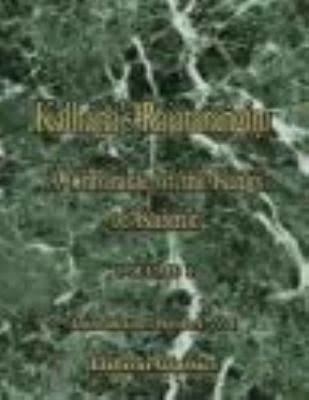Original language Sanskrit | ||
 | ||
Similar Aurel Stein books, India books, Other books | ||
Rajatarangini
Rajatarangini (Rājataraṃgiṇī, "The River of Kings") is a metrical legendary and historical chronicle of the north-western Indian subcontinent, particularly the kings of Kashmir. It was written in Sanskrit by Kashmiri historian Kalhana in the 12th century CE. The work consists of 7826 verses, which are divided into eight books called Tarangas ("waves").
Contents
- Rajatarangini
- Context
- List of kings
- Book 1
- Gonanditya dynasty
- Book 2
- Literary
- Historical reliability
- Sequels
- Translations
- Adaptions
- References
The Rajataringini provides the earliest source on Kashmir that can be labeled as a "historical" text on this region. Although inaccurate in its chronology, the book still provides an invaluable source of information about early Kashmir and its neighbors in the north western parts of the Indian subcontinent, and has been widely referenced by later historians and ethnographers.
Context
Little is known about the author Kalhana (c. 12th century CE), apart from what is written in the book. His father Champaka was the minister (Lord of the Gate) in the court of Harsha of Kashmir. In the first Taranga (book) of Rajatarangini, Kalhana expresses his dissatisfaction with the earlier historical books, and presents his own views on how history ought to be written:
Despite these stated principles, Kalhana's work is also full of legends and inconsistencies (see Historical reliability below).
List of kings
The kings of Kashmir described in the Rajatarangini are given below. Notes in parentheses refer to a book ("Taranga") and verse. Thus (IV.678) is Book IV verse 678. The summary is from J.C. Dutt's translation. Kalhana's work uses Kali and Laukika (or Saptarishi) calendar eras: the ascension year in CE, as given below, has been calculated by Dutt based on Kalhana's records.
Book 1
Kalhana mentions that Gonanda I ascended the throne in 653 Kali calendar era. According to Jogesh Chander Dutt's calculation, this year corresponds to 2448 BCE. The total reign of the following kings is mentioned as 1266 years.
Gonanditya dynasty
The Gonanditya dynasty ruled Kashmir for 1002 years.
Book 2
No kings mentioned in this book have been traced in any other historical source. These kings ruled Kashmir for 192 years.
Literary
Kalhana was an educated and sophisticated Sanskrit scholar, well-connected in the highest political circles. His writing is full of literary devices and allusions, concealed by his unique and elegant style.
Historical reliability
Despite the value that historians have placed on Kalhana's work, there is little evidence of authenticity in the earlier books of Rajatarangini. For example, Ranaditya is given a reign of 300 years. Toramana is clearly the Huna king of that name, but his father Mihirakula is given a date 700 years earlier. Even where the kings mentioned in the first three books are historically attested, Kalhana's account suffers from chronological errors.
Kalhana's account starts to align with other historical evidence only by Book 4, which gives an account of the Karkota dynasty. But even this account is not fully reliable from a historical point of view. For example, Kalhana has highly exaggerated the military conquests of Lalitaditya Muktapida.
Sequels
Translations
A Persian translation of Rajatarangini was commissioned by Zain-ul-Abidin, who ruled Kashmir in the 15th century CE.
Horace Hayman Wilson partially translated the work, and wrote an essay based on it, titled The Hindu History of Kashmir (published in Asiatic Researches Volume 15). Subsequent English translations of Kalhana's Rajatarangini include:
Translations in other languages include:
Adaptions
Several books containing legendary stories from Rajatarangini have been compiled by various authors. These include:
A television series based on Rajatarangini named Meeras was begun in 1986 in Doordarshan Srinagar.
